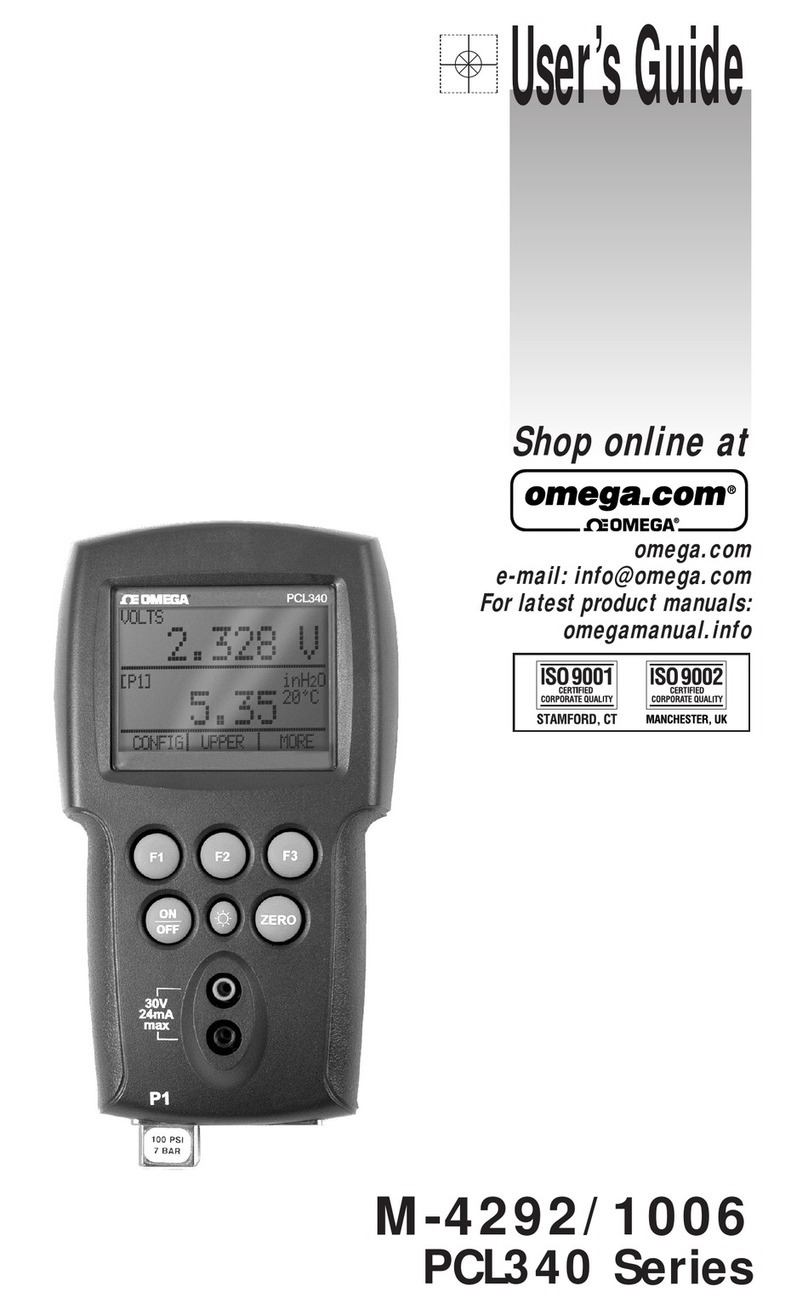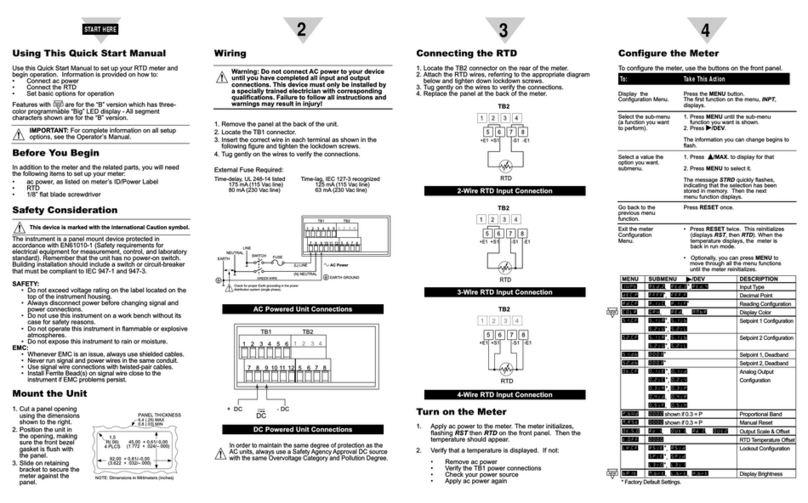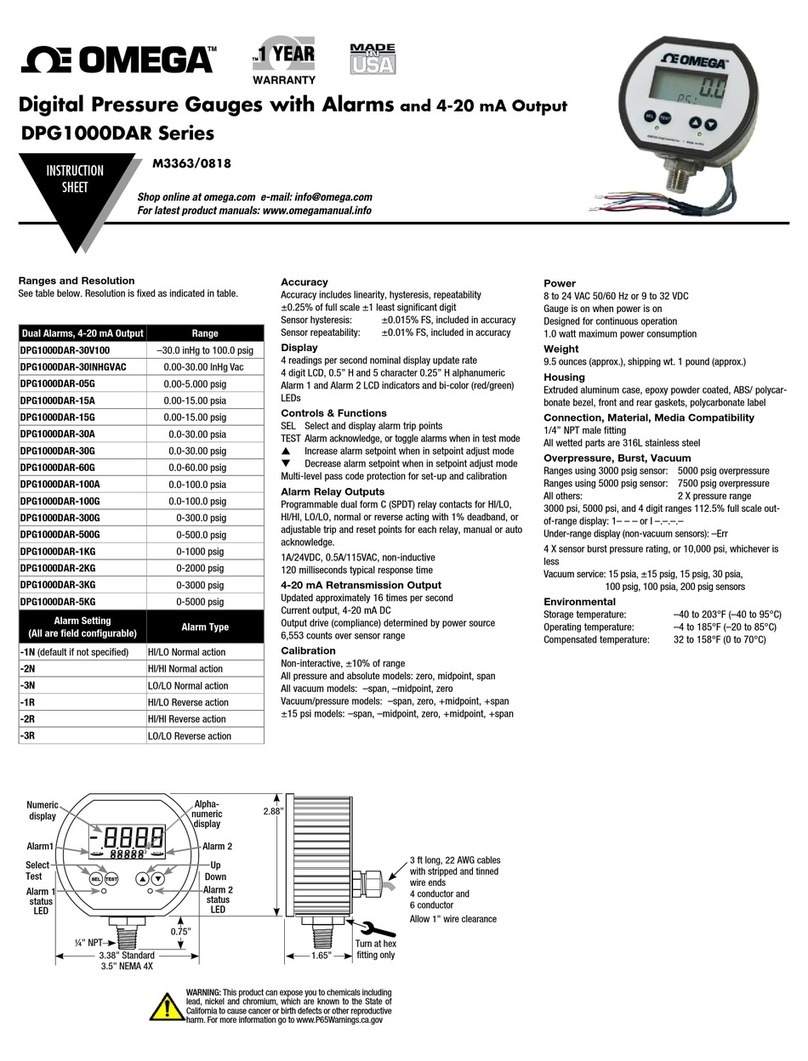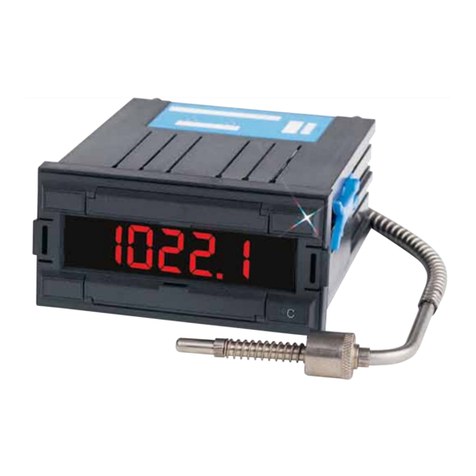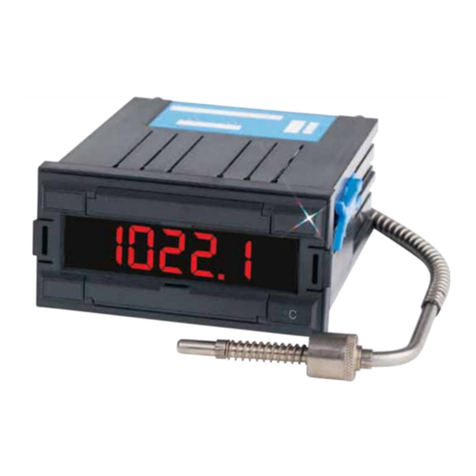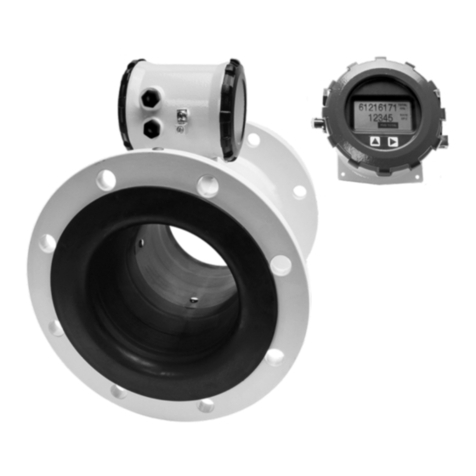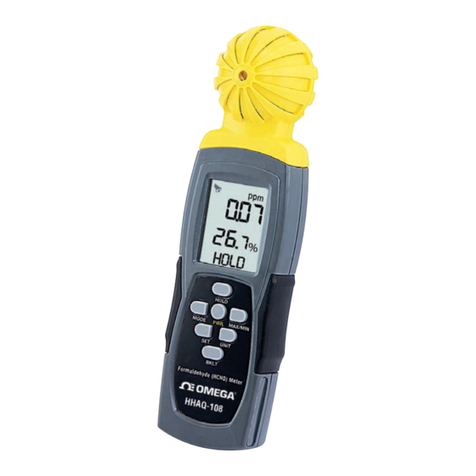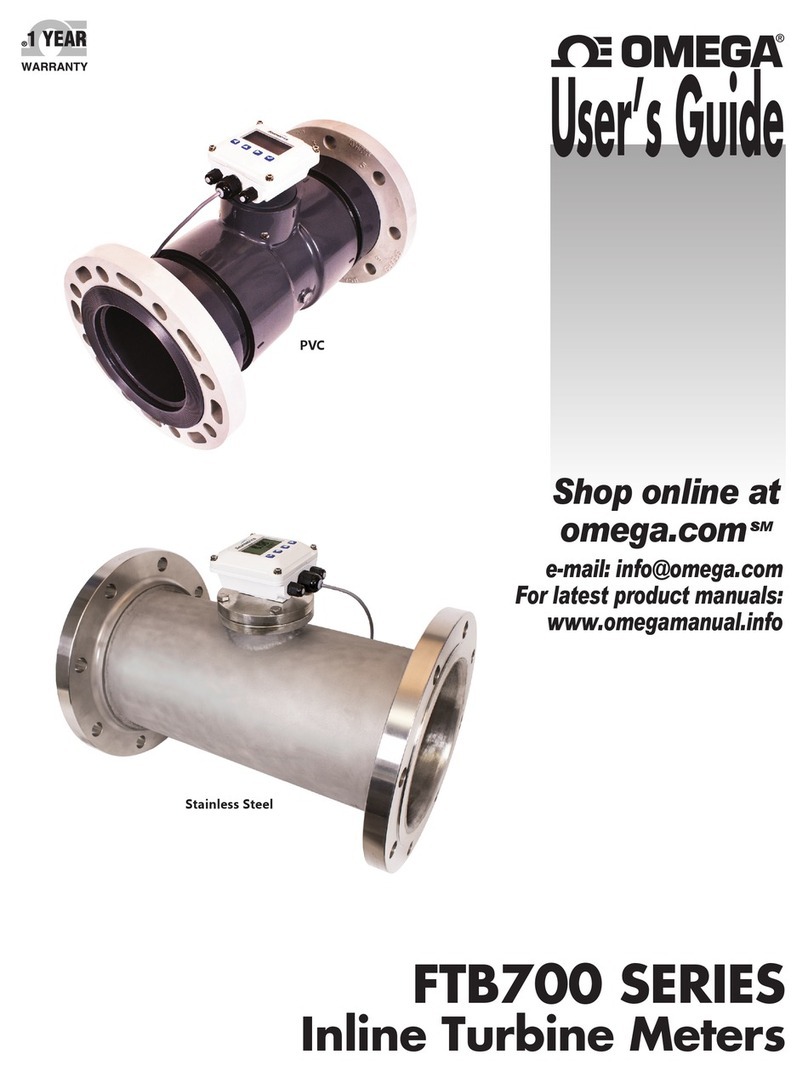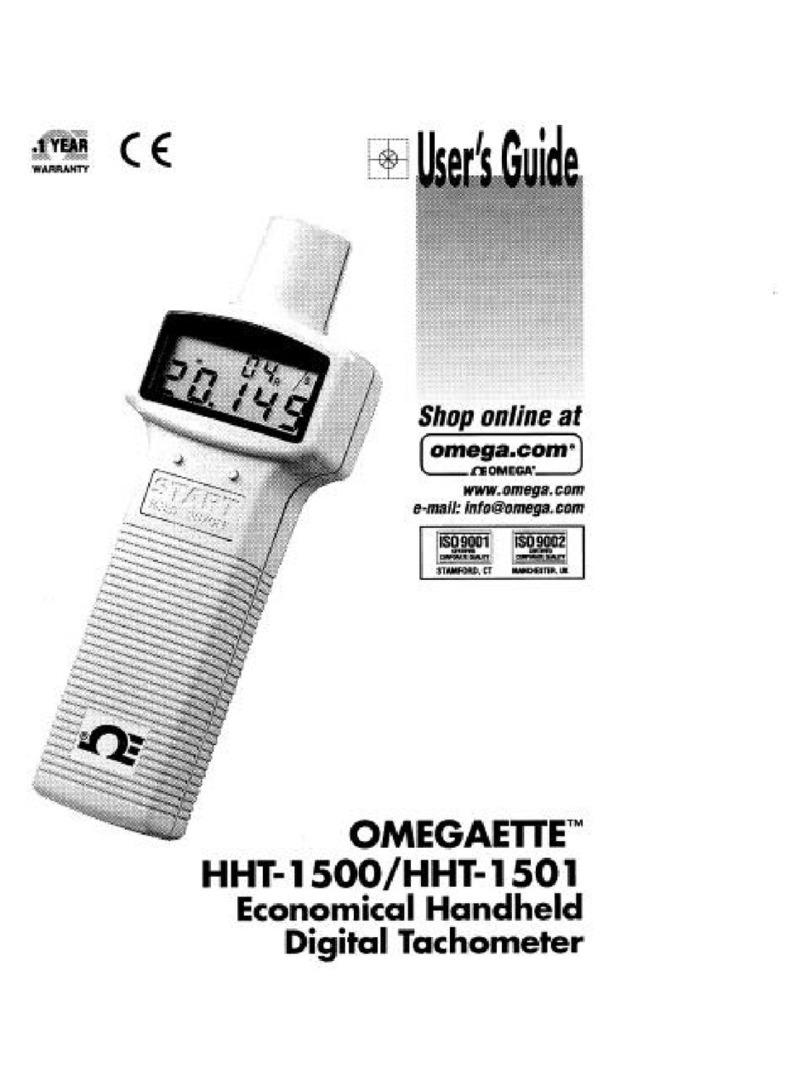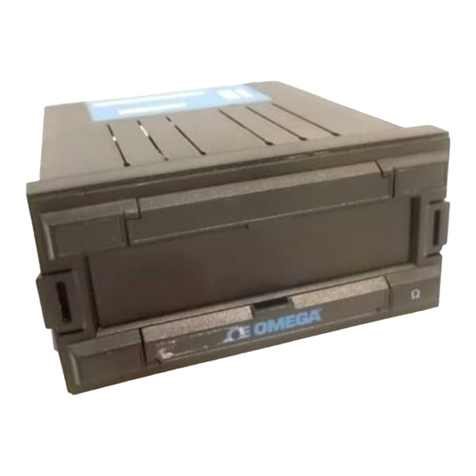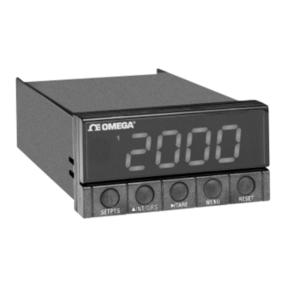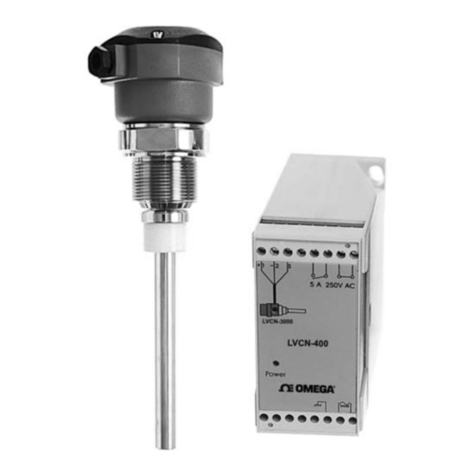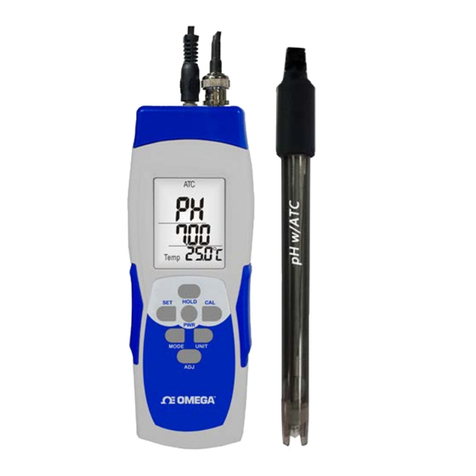1. Panel meter DPF20
Counter, ratemeter and periodmeter, 96 x 48 mm (1/8 DIN)
Panel meter 96 x 48 mm (1/8 DIN) and 6 digits with 14 mm digit height,
congurable with 5 impulse counter modes (see secon 1.2), 2 rate-
meter modes (see secon 1.3) and a 1 periodmeter mode (see secon
1.4).
Highly congurable, accepts all types of sensors (NPN, PNP, push-
pull, Namur, inducve, pick-up, mechanical, TTL, CMOS, ...) including
quadrature signals (single and bidireconal encoder signals).
Reading from 999999 to -199999 with decimal point, scalable read-
ing with congurable mulplier factor (1 to 999999) and congurable
divider factor (1 to 999999). Includes internal pull-up and pull-down
resistors, congurable trigger levels, detecon by rising or falling edge,
excitaon voltage congurable from 5 Vdc to 18 Vdc.
Opons for output and control with 1, 2 and 3 relays, transistor out-
puts, SSR drive controls, isolated analog outputs, communicaons in
Modbus RTU, RS-485 ASCII and RS-232. Special opons with 4 and 6
relay outputs.
Independent alarms congurable as maximum or minimum, with 1 or
2 setpoints per alarm, hysteresis, independent acvaon and deac-
vaon delays and control for inverted relay.
Front protecon IP65. Connecons by plug-in screw terminals. For in-
dustrial applicaons.
• ‘Fast access’ menu to selected funcons, accessible with key UP (5)
(see secon 1.19.12)
• Funcon ‘On power up’ for system protecon on rst ‘cold’ start-up
or automac reset (see secon 1.19.15)
• Special ‘FAST’ mode for fast counng applicaons (see secon 1.16)
• Special ‘SLOW’ mode for slow ratemeter applicaons (low frequency
applicaons) (see secon 1.15)
• Direct conguraon for most usual sensor, at the ‘SnSr / Auto’ menu
(see secon 1.19.10)
• Funcon ‘Trigger Sense’ helps to detect the correct trigger level (see
secon 1.13)
Mulple display lters, memory for maximum and minimum reading,
password protecon, 5 brightness levels.
Index
1. Panel meter DPF20 . . . . . . . . . . . . . . . . . . . . . . . 4
1.1 How to order . . . . . . . . . . . . . . . . . . . . . . . . 5
1.2 Impulse counter modes . . . . . . . . . . . . . . . . . . 5
1.3 Ratemeter modes. . . . . . . . . . . . . . . . . . . . . . 5
1.4 Periodmeter mode . . . . . . . . . . . . . . . . . . . . . 5
1.5 Funcons included . . . . . . . . . . . . . . . . . . . . . 5
1.6 Front view . . . . . . . . . . . . . . . . . . . . . . . . . . 6
1.7 Power connecons . . . . . . . . . . . . . . . . . . . . . 6
1.8 Sensor conguraon and connecons . . . . . . . . . . 6
1.9 Rear view . . . . . . . . . . . . . . . . . . . . . . . . . . 6
1.10 Signal connecons . . . . . . . . . . . . . . . . . . . . 6
1.11 Technical specicaons . . . . . . . . . . . . . . . . . . 7
1.12 Mechanical dimensions (mm) (in) . . . . . . . . . . . . 7
1.13 Funcon ‘Trigger Sense’ . . . . . . . . . . . . . . . . . 8
1.14 Funcon ‘cycle counter’ . . . . . . . . . . . . . . . . . 8
1.15 ‘SLOW’ mode . . . . . . . . . . . . . . . . . . . . . . . 8
1.16 ‘FAST’ mode . . . . . . . . . . . . . . . . . . . . . . . . 8
1.17 How to operate the menus. . . . . . . . . . . . . . . . 9
1.18 Messages and errors . . . . . . . . . . . . . . . . . . . 9
1.19 Conguraon menu. . . . . . . . . . . . . . . . . . . . 10
1.19.1 Inial set-up . . . . . . . . . . . . . . . . . . . . . .10
1.19.2 Conguraon for ‘cn.1’ . . . . . . . . . . . . . . . .10
1.19.3 Conguraon for ‘cnq.2’ . . . . . . . . . . . . . . . 11
1.19.4 Conguraon for ‘cnI.3’ . . . . . . . . . . . . . . . . 11
1.19.5 Conguraon for ‘cnc.4’ . . . . . . . . . . . . . . . 11
1.19.6 Conguraon for ‘cnd.5’ . . . . . . . . . . . . . . . 12
1.19.7 Conguraon for ‘rt.6’ . . . . . . . . . . . . . . . . 12
1.19.8 Conguraon for ‘rtq.7’. . . . . . . . . . . . . . . . 12
1.19.9 Conguraon for ‘Prd.8’ . . . . . . . . . . . . . . . 13
1.19.10 Sensor conguraon. . . . . . . . . . . . . . . . . 13
1.19.11 Alarms . . . . . . . . . . . . . . . . . . . . . . . . 15
1.19.12 Fast access . . . . . . . . . . . . . . . . . . . . . . 16
1.19.13 Super fast access . . . . . . . . . . . . . . . . . . . 16
1.19.15 Menu ‘On Power Up’ . . . . . . . . . . . . . . . . 16
1.19.14 Menu ‘Key LE’ . . . . . . . . . . . . . . . . . . . . 16
1.19.16 Menus ‘Overrange / underrange’. . . . . . . . . . 17
1.19.17 Le zeros . . . . . . . . . . . . . . . . . . . . . . .17
1.19.18 Vexc. control . . . . . . . . . . . . . . . . . . . . .17
1.19.19 Funcon ‘Password’ . . . . . . . . . . . . . . . . .17
1.19.20 Factory reset . . . . . . . . . . . . . . . . . . . . .17
1.19.21 Firmware version. . . . . . . . . . . . . . . . . . . 17
1.19.22 Brightness . . . . . . . . . . . . . . . . . . . . . . 17
1.19.23 Access to oponal modules . . . . . . . . . . . . . 17
1.20 Full conguraon menu . . . . . . . . . . . . . . . . . 18
1.21 Factory conguraon . . . . . . . . . . . . . . . . . . .21
1.22 To access the instrument . . . . . . . . . . . . . . . . .22
1.23 Modular system . . . . . . . . . . . . . . . . . . . . . .22
1.24 Precauons on installaon . . . . . . . . . . . . . . . .23
1.25 CE declaraon of conformity . . . . . . . . . . . . . . . 23
2. Output and control modules . . . . . . . . . . . . . . . . . 24
2.1 Módules R1, T1 and SSR . . . . . . . . . . . . . . . . . .24
2.2 Module AO . . . . . . . . . . . . . . . . . . . . . . . . . 25
2.2.1 Conguraon menu . . . . . . . . . . . . . . . . . . 26
2.2.2 Error codes . . . . . . . . . . . . . . . . . . . . . . . 26
2.2.3 Factory conguraon . . . . . . . . . . . . . . . . . . 26
2.3 Module RTU. . . . . . . . . . . . . . . . . . . . . . . . . 27
2.3.1 Accessible registers . . . . . . . . . . . . . . . . . . . 27
2.3.2 Conguraon menu . . . . . . . . . . . . . . . . . . 28
2.3.3 Excepon codes . . . . . . . . . . . . . . . . . . . . . 28
2.3.4 Descripon and example for Modbus RTU registers 29
2.4 Module S4. . . . . . . . . . . . . . . . . . . . . . . . . . 30
2.4.1 Accessible registers . . . . . . . . . . . . . . . . . . . 30
2.4.2 Conguraon menu . . . . . . . . . . . . . . . . . . 31
2.4.3 Factory conguraon . . . . . . . . . . . . . . . . . . 31
2.4.4 Frame types . . . . . . . . . . . . . . . . . . . . . . .32
2.4.5 Frame structure . . . . . . . . . . . . . . . . . . . . . 32
2.4.6 Error codes . . . . . . . . . . . . . . . . . . . . . . . 32
2.4.7 Frame examples. . . . . . . . . . . . . . . . . . . . . 33
2.4.8 CRC calculaon . . . . . . . . . . . . . . . . . . . . .33
2.5 Module S2. . . . . . . . . . . . . . . . . . . . . . . . . . 34
2.6 Modules R2, R4 and R6. . . . . . . . . . . . . . . . . . . 34
2.6.1 Conguraon menu . . . . . . . . . . . . . . . . . . 35
2.6.2 Factory conguraon . . . . . . . . . . . . . . . . . . 35
3. How to open and close. . . . . . . . . . . . . . . . . . . . . 36
3.1 How to open the housing . . . . . . . . . . . . . . . . . 36
3.2 How to close the housing . . . . . . . . . . . . . . . . . 37





